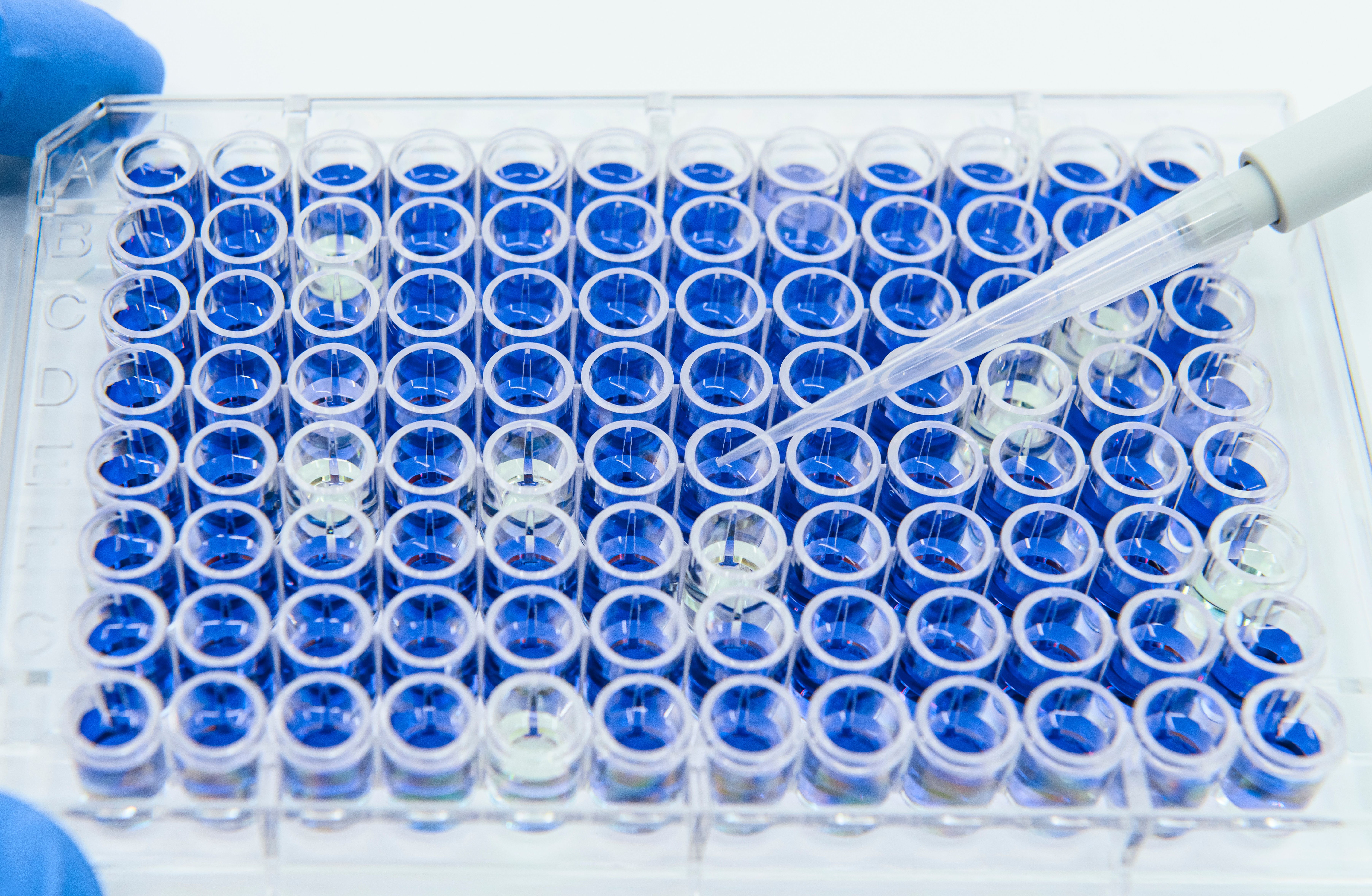NIR Tested for Drug Screening Capabilities
Scientists from the State University of Campinas–UNICAMP, the Federal University of Viçosa, and the National Institute of Criminalistics in Brazil, recently published a paper in Spectrochimica Acta Part A: Molecular and Biomolecular Spectroscopy on how near-infrared (NIR) spectroscopy could potentially be effective at detecting ectasy in samples (1).
Cell viability assay by 96 well micro plate for Drug screening | Image Credit: © HYUNGKEUN - stock.adobe.com

Ecstasy is one of the most widely distributed illicit drugs, which usually contains MDMA (N-methyl-3,4-methylenedioxyamphetamine), MDA (3,4-methylenedioxyamphetamine) or MDEA (N-ethyl-3,4-methylenedioxyamphetamine) as its main active substances. The drug is one of the most seized synthetic drugs in Brazil and other countries. In an example of how frequently used the drug is, in 2020, a drug laboratory was dismantled with 18 kg of pure MDMA being seized along with precursors, which would have been enough to create almost 900,000 “ecstasy” tablets (2).
Seized samples in Brazil are sent to the Forensic Chemistry Laboratory in the National Institute of Criminalistics in Brasília-DF, where scientists characterize them using analytical techniques such as gas chromatography (GC) coupled to flame ionization detector (FID), high performance liquid chromatography (HPLC) coupled to mass spectrometry (MS), UV detector, and diode array detector after laborious and sample destructive analytical protocols complemented by infrared spectroscopy. These methods require major financial investment, while law enforcement trying to identify ecstasy in the field rely on using subjective colorimetric or spot tests that usually produce false positives or fail to detect active substances.
These issues have led to a need of ecstasy identification analytical methods that are low-cost, effective, and less subjective. Spectroscopic techniques are potential candidates for these criteria with near-infrared (NIR) spectroscopy showing more advantages than other types of spectroscopies. This technique directly operates on samples and employs protocols based on diffuse reflectance measurements, can deal with highly humid samples, and is greener than other spectroscopy techniques. As such, NIR spectroscopy was used to characterized ecstasy samples seized by the Brazilian Federal Police in addition to spectral data obtained via a compact, low-cost, near-infrared Fourier-transform based spectrophotometer.
Qualitative and quantitative characterization was done using soft independent modeling of class analogy (SIMCA), linear discriminant analysis (LDA) classification, discriminating partial least square (PLS-DA), and regression models based on partial least square (PLS). Using chemometric analysis, the scientists proposed new protocols for in-field screening of seized ecstasy samples. The validation led to an efficiency rate of more than 96% for ecstasy characterization estimating total actives, MDMA, and MDA content in the samples with a root mean square error of validation of 4.4, 4.2, and 2.7 % (m/m), respectively. Based off these findings, the feasibility and drawbacks of applying NIR technology to ecstasy characterization can open more conversations about how screening efforts can be improved through various stages of the process.
References
(1) Cavalcante, J. A.; Souza, J. C.; Rohwedder, J. J. R.; Maldaner, A. O.; Pasquini, C.; Hespanhol, M. C. A Compact Fourier-Transform Near-Infrared Spectrophotometer and Chemometrics for Characterizing a Comprehensive Set of Seized Ecstasy Samples. Spectrochim. Acta Part A: Mol. Biomol. Spectrosc. 2024, 314, 124163. DOI: https://doi.org/10.1016/j.saa.2024.124163
(2) August 2020–Brazil: Emergence of “Ecstasy” Manufacture in Clandestine Laboratories. UNODC 2020. https://www.unodc.org/LSS/Announcement/Details/e7c21143-eb4d-47e6-9a70-723eb6e47c29 (accessed 2024-3-29)
Machine Learning and Optical Spectroscopy Advance CNS Tumor Diagnostics
July 1st 2025A new review article highlights how researchers in Moscow are integrating machine learning with optical spectroscopy techniques to enhance real-time diagnosis and surgical precision in central nervous system tumor treatment.
Toward a Generalizable Model of Diffuse Reflectance in Particulate Systems
June 30th 2025This tutorial examines the modeling of diffuse reflectance (DR) in complex particulate samples, such as powders and granular solids. Traditional theoretical frameworks like empirical absorbance, Kubelka-Munk, radiative transfer theory (RTT), and the Hapke model are presented in standard and matrix notation where applicable. Their advantages and limitations are highlighted, particularly for heterogeneous particle size distributions and real-world variations in the optical properties of particulate samples. Hybrid and emerging computational strategies, including Monte Carlo methods, full-wave numerical solvers, and machine learning (ML) models, are evaluated for their potential to produce more generalizable prediction models.
Combining AI and NIR Spectroscopy to Predict Resistant Starch (RS) Content in Rice
June 24th 2025A new study published in the journal Food Chemistry by lead authors Qian Zhao and Jun Huang from Zhejiang University of Science and Technology unveil a new data-driven framework for predicting resistant starch content in rice